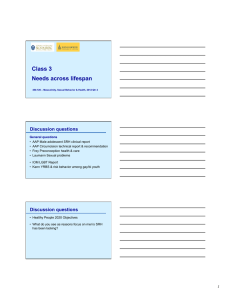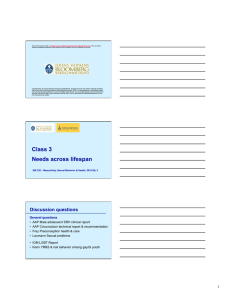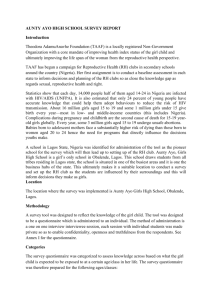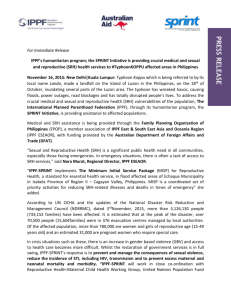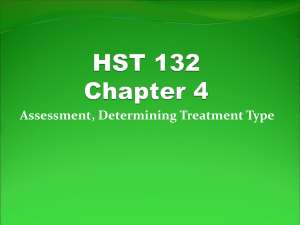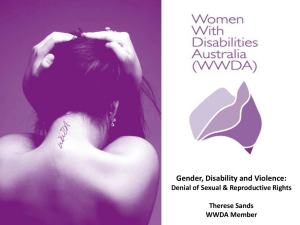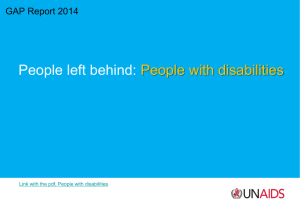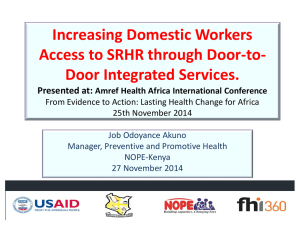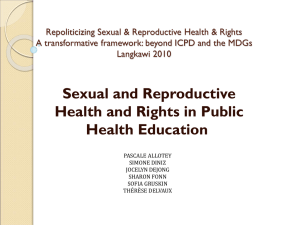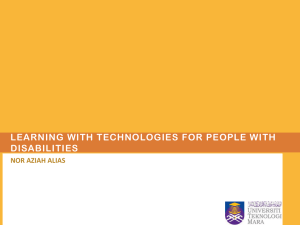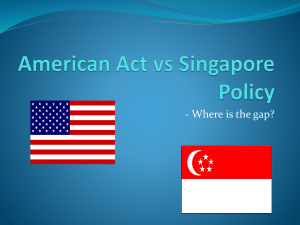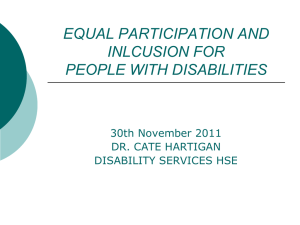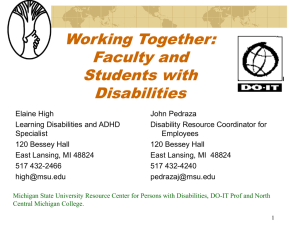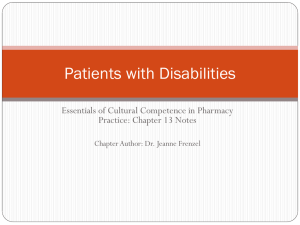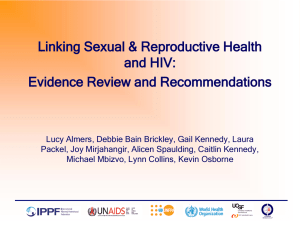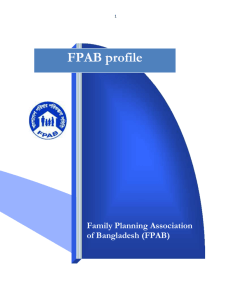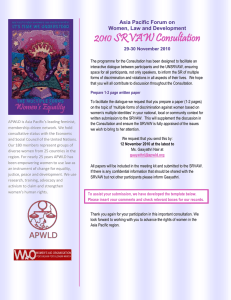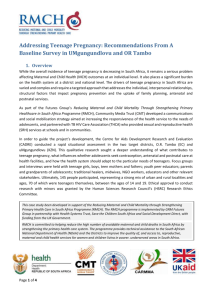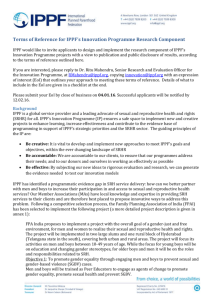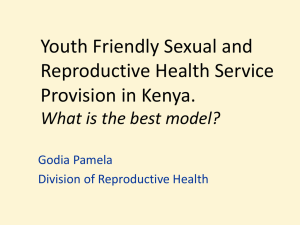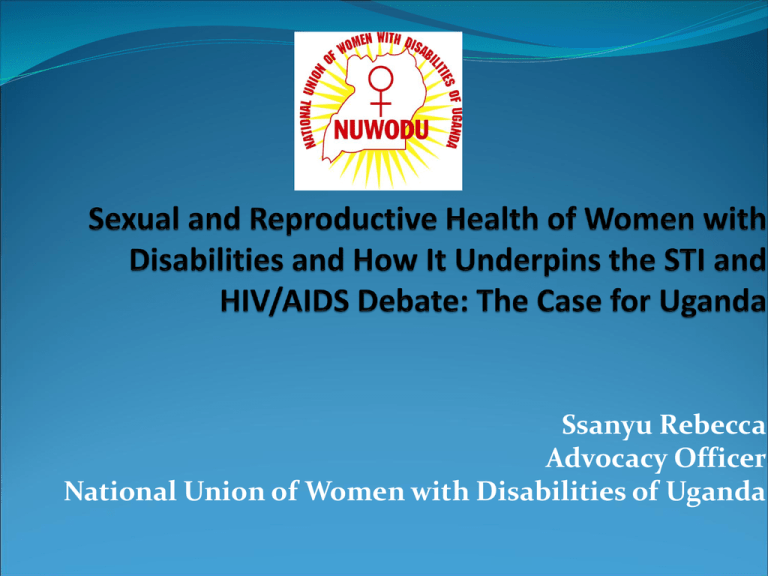
Ssanyu Rebecca
Advocacy Officer
National Union of Women with Disabilities of Uganda
About the National Union of Women with
Disabilities of Uganda
National Union of Women with Disabilities of Uganda is
abbreviated as NUWODU.
It was founded in 1999
Mission: To promote social, cultural, economic and political
advancement of girls and women with disabilities
Why focus on Girls and Women with Disabilities?
Girls and women with disabilities comprise 10% of all women
worldwide
They comprise ¾ of PWDs globally (WHO)
In Uganda, 16% population (i.e. 5.44m people) are PWDs
above the age of 15 years (UBOS, 2010)
Of these 75% (i.e. 4.08m people) are WWDs above the age of
15 years
GWWDs generally live in remote rural areas with limited, if
any, access to socioeconomic services
GWWDs subjected to multiple forms of discrimination, first
as women then as PWDs
The Sex by Choice not by Chance Intervention
• Conceived by NUWODU and the Disabled People’s
•
•
•
•
•
Organisation Denmark (DPOD) in 2009
To respond to sexual and reproductive health rights and
needs of GWWDs
GWWDs were and are still being denied their SRH rights and
their corresponding needs not being addressed by service
providers
GWWDs also find themselves unable to resist chancy sexual
violations against them
At other times they engage in consensual yet risky / chancy
sexual acts
Hence GWWDs highly prone to HIV&AIDS, STIs and sexual
and reproductive ill-health
The Sex by Choice Intervention: Strategies
Used
• Promotion of disability and SRH as human rights and
•
•
•
•
•
•
development issues rather than private issues
Family and community approach: participation of all parities
as advocates for and promoters of SRHR for GWWDs
Using culturally sensitive approaches: working with cultural,
religious, political, opinion leaders
Active involvement of men
Strategic partnerships with relevant CSOs, legal aid service
providers and DPOs
Awareness creation among service providers
Research and documentation
The Sex by Choice Intervention: Emerging Successes
• Increased knowledge, self-esteem and skills among girls with
•
•
•
•
disabilities about sexuality issues
Involving affected WWDs and sometimes their spouses in
planning and implementation processes has generated
quicker positive response than had been anticipated
Capacity building of WWDs as counsellors and legal advisors
has not only benefited PWDs but also people without
disability
Referral of WWDs needing legal redress on matters of sexual
violation
Increased disability awareness and sensitivity among service
providers, particularly officers of the health sector and the
criminal justice system
The Sex by Choice Intervention: Challenges
Discrepancies between SRH policy and practice
Good policy, poor commitment to implementation
Even when adopted, do not translate to local level service
delivery
Inadequate in responding to needs of GWWDs
Education of healthcare professionals lacking in disability
understanding management
Negative attitudes of healthcare providers
Lack of disability desegregated national data on PWD
health indicators
Relevance of SRHR of GWWDs to the
HIV/AIDS and STI debate
Sexual and reproductive ill-health and HIV share root
causes
Most HIV infections are sexually transmitted or
associated with pregnancy, childbirth and
breastfeeding
Linking Sexual and Reproductive Health Rights and
HIV and AIDS increases the effectiveness of the
HIV&AIDS response
Most people with disabilities think of their sexual and
reproductive lives in a holistic way with HIV and AIDS
as only one consideration
Bridging the policy-practice gap in SRH services to GWWDs
At Policy Level
Inclusion of disability training in the curriculum of
healthcare professionals
The issue of abortion needs to be addressed by
governments from an objective and human rights
perspective
Data: governments should (are obliged to) build a
knowledge base of data and information about the
situation of persons with disabilities
Recruitment of communication experts for the deaf, blind
and deaf-blind in public healthcare facilities sgould be
taken seriously
Physical access in healthcare facilities (beds, ramps,
toilets/pits) should be addressed
Bridging the policy-practice gap in SRH
services to GWWDs
At Implementation Level
Focus specific Sexual and Reproductive Health education to
girls and women with disabilities
Promote contraception / family planning among WWDs –
taking care to ensure correct information and consent
Include GWWDs in both formal and informal sexual and
reproductive health education
In carrying out health education, specific attention should be
put to communication needs of the deaf, blind and deaf blind
persons
Conclusion
• Because SRH and HIV&AIDS are mutually reinforcing and
precipitated by the same factors, a holistic approach towards
addressing these issues is the best way to go.
• Linkages between the two should promote rights, address root
causes of vulnerability, and reduce stigma and discrimination.
• Governments should act to reduce the discrepancies between
policy and practice and adhere to international standards in
delivering services to women (and indeed persons) with
disability.
• It is then and only then that true social economic development
and progress towards realisation of millennium development
goals will be realised.
Every one, Every day, Every
way …
Help to Improve Sexual and
Reproductive Health for girls
and Women with Disabilities

